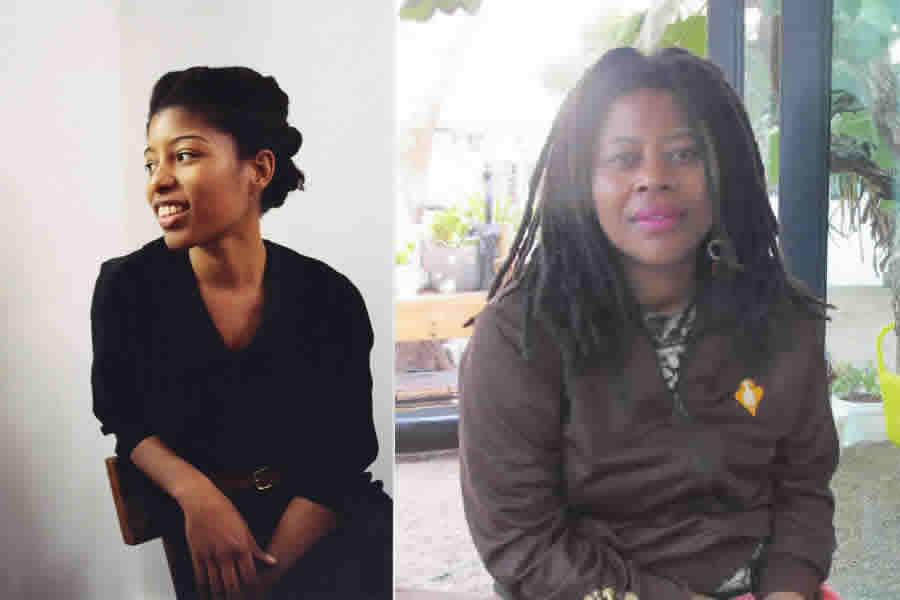On Tuesday March 6, 2012, Sharifa Rhodes-Pitts (above, left), author of Harlem is Nowhere: A Journey to the Mecca of Black America and artist Simone Leigh sat down for a conversation with moderator and art critic Claire Barliant for the New York Public Library’s LIVE series to discuss history, memory and legacy. Harlem is Nowhere, the name taken from a 1948 essay by Ralph Ellison, explores the legendary place through Rhodes-Pitts eyes as she unearths and adds to the history of Harlem. For Rhodes-Pitts, much of black history is still being uncovered and is therefore eligible for editing. The same rings true for Simone Leigh who plays with the narratives of black history in her work, particularly in the film Breakdown, which was shown on Tuesday night, and questions the idea of black women and mental health. Opera singer Alicia Hall Moran sings text from the 1970s show Mary Hartman, Mary Hartman, the modern-day television show Intervention, and lines from Anthony Harvey’s 1967 film adaptation of The Dutchman by Amiri Baraka.
 In the film, Moran (left) belts operatically and erratically about mundane things, one of which is the line “I don’t want to go to the ball game” while making staggered, uneasy movements and staring blankly. She looks as if the psychological paint of her mind is peeling. She elicits both discomfort from the viewer and a sense of relief at seeing a black woman lose it –a very different action then “showing out” as one male audience member put it. The film provided a sanctioned space for a black woman to have a mental breakdown as culturally it is not something that has been afforded to black women. Barliant stated Leigh’s work operates from a revisionist angle to which Leigh responded her revisionist lens came from her study of art in college and realizing that what was being offered was not a real art education as it did not speak to black art or art by women, “what was being offered was fraudulent.”
In the film, Moran (left) belts operatically and erratically about mundane things, one of which is the line “I don’t want to go to the ball game” while making staggered, uneasy movements and staring blankly. She looks as if the psychological paint of her mind is peeling. She elicits both discomfort from the viewer and a sense of relief at seeing a black woman lose it –a very different action then “showing out” as one male audience member put it. The film provided a sanctioned space for a black woman to have a mental breakdown as culturally it is not something that has been afforded to black women. Barliant stated Leigh’s work operates from a revisionist angle to which Leigh responded her revisionist lens came from her study of art in college and realizing that what was being offered was not a real art education as it did not speak to black art or art by women, “what was being offered was fraudulent.”
Rhodes-Pitts brings to light lesser known but influential players in the history of Harlem in her book. One fascinating man, Alexander Gumby, was a scrapbooker, who much like Arturo Schomburg, was intent on recording black history and culture. Rhodes-Pitts writes, “ Gumby’s dreams, what he remembered and what he failed to remember, reached their fullest expression through his rather feminine, peculiar occupation. He was building a diorama while his contemporaries engaged in the outward, upward, excavating, campaigning activities more typically associated with the race man.” Barliant observed in the way Gumby pieced together his work, Rhodes-Pitts constructed her book in a similar vain. Both are capturing things that would have been lost and are making history tangible.
Rhodes-Pitts and Leigh use history as a means to interact with the present. Much of Harlem is Nowhere places history and present side by side. The conversations with residents living in Harlem today are necessary to gauge what Harlem was and is. Watch the walking, not the dead, a striking quote from a man in the book named Julius Bobby Nelson with whom Rhodes-Pitts interacted, was an order for her to pay attention to the now; though the work of mapping history, to see where we are going, cannot be done without doing both. When asked a question about black art, particularly black art in America, a woman questioned the encouragement of black artists to only look to the past as a resource for their work. Leigh refuted this by saying she was told to do the exact opposite. Rhodes-Pitts posed that black people were the only group that she knew who were repeatedly asked to forget their history, especially with the advent of terms like “post-black” – this evoked loaded laughter from both writer and artist and some in the audience. “Post-blackness” was clearly too big a topic for the small stage in the Trustees Room that night, but a good answer for the women’s question was the sentiment expressed by Arthur Schomberg in his essay The Negro Digs Up His Past, and which fueled Rhodes-Pitts writing, “history must restore what slavery took away.”
Additional links:


